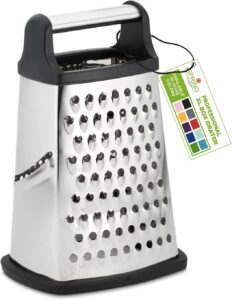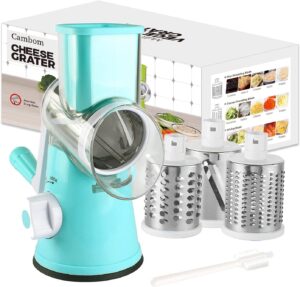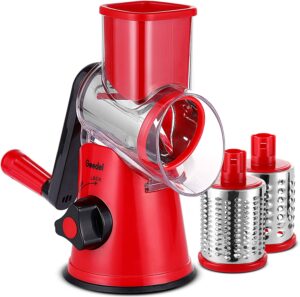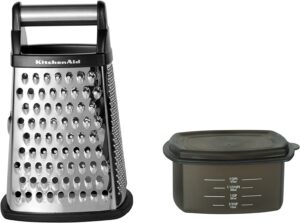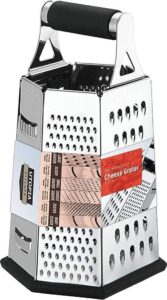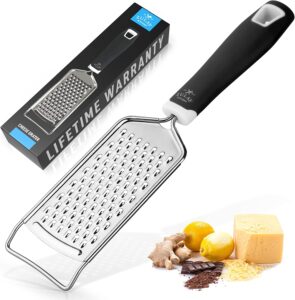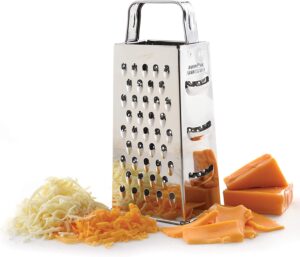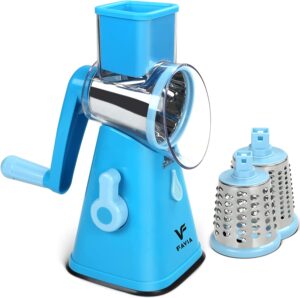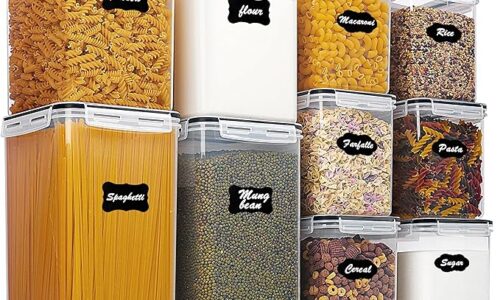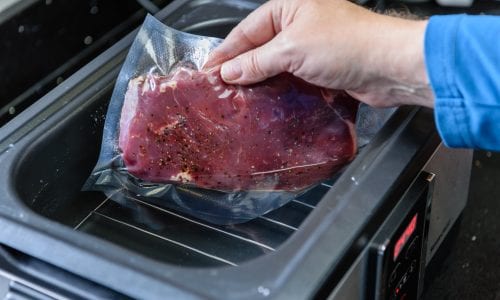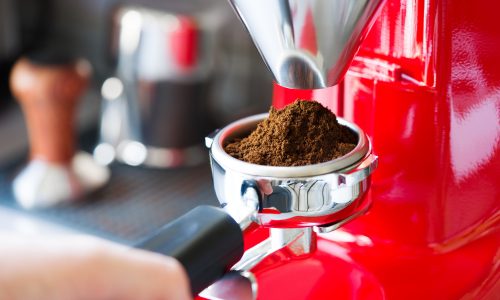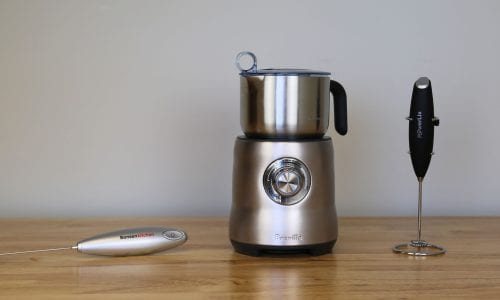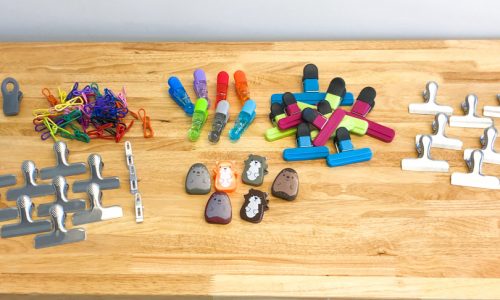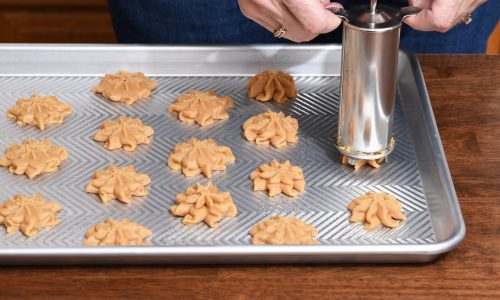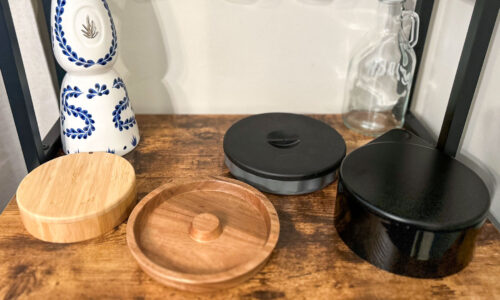The Best Cheese Grater

Our Review Process
Don't Waste Your Money is focused on helping you make the best purchasing decision. Our team of experts spends hundreds of hours analyzing, testing, and researching products so you don't have to. Learn more.
Our Picks For The Top Cheese Graters
- 1. Spring Chef 4-Sided Stainless Steel Cheese Grater
- 2. OXO Good Grips Non-Slip Foot & Handle Cheese Grater
- 3. Cambom Suction Base Rotary Cheese Grater
- 4. Geedel 3 Interchangeable Blades Rotary Cheese Grater
- 5. Zyliss Non-Slip Knob Handheld Rotary Cheese Grater
- 6. KitchenAid Non-Slip Base Stainless Steel Cheese Grater
- 7. Utopia Kitchen Rubber Grip Handle 6-Sided Cheese Grater
- 8. Zulay Kitchen Built-In Hanging Hole Cheese Grater
- 9. Norpro All Stainless Steel Construction 4-Sided Cheese Grater
- 10. FAVIA Dishwasher Safe Rotary Cheese Grater
A four-sided design gives you three sizes of grating, as well as a slicer. The comfortable handle helps prevent slipping while also keeping your hand comfortable while you grate. Stainless-steel blades and a removable bottom make this grater durable and easy to clean.
Multiple ColorsFun, colorful trim makes this cheese grater stand out from the competition.
For softer cheeses and vegetables, there’s this cheese grater, which features a small build with a comfortable nonslip handle. The grating surface features sharp, etched stainless steel, making it dishwasher safe and durable. It comes with a cover that protects the blade and you between uses.
Great for PortabilityThis cheese grater is both easy to store and to take on the go with you, measuring only 1” x 4.09” x 13.58”.
This manual-crank cheese grater features a 360-degree roller that can handle a large volume at once. Stainless steel parts and BPA-free plastic make it a safe but durable kitchen tool. The base features a suction cup that holds it in place while you’re using it.
For Serious ChefsSave effort and slice more with this cheese grater, which features a design that can handle large portion sizes.
Made from food-grade 430 stainless steel, this grater has three interchangeable blades that allow you to shred, slice and grind. It has a powerful suction base that ensures it stays put on the counter while you’re using it, and a transparent barrel to help you keep an eye on the ingredients as they’re going through. The handle is comfortable an...
Easy to UseThis grater features three rotating blades made from 430 stainless steel to make prep work effortless.
Buying Guide
Shredded and grated cheese are an important part of many recipes, from tacos to casseroles. While you can buy bagged cheese at the grocery store, there’s something about fresh-cut cheese that enhances its flavor. Grating your cheese also widens the variety of cheeses you can use and provides a fresh cut with each meal.
Although cheese graters have been part of household kitchens going all the way back to the 1500s, they’ve undergone many improvements, but you can still find cheese graters with classic designs. Most cheese graters require no electricity to operate. They’re manually operated, which allows you to move around the kitchen with them.
There are two popular designs for today’s cheese graters. One involves you holding a grater with one hand while moving the food item over the surface. You’ll find these either in a flat, two-sided design or the raised, multi-sided design that stands upright on a counter. A second, newer design has a handle you turn while inserting the food product into the top. The blade rotates and tackles the grating job, spitting the results out the other side through a tilted chute-like mechanism.
But not all cheese grates the same. Softer cheese can tend to be a problem, clogging the blades and creating a mess. Monterey jack and processed cheese tend to adhere to blades more than mozzarella, for instance, making mozzarella easier to work with. Mozzarella also grates to a finer result. Those who regularly use mozzarella may find a grater a better investment than those who prefer softer cheeses.
Cheese graters aren’t just for cheese, though. You can use them for vegetables like carrots and potatoes, as well as chocolate and nuts. Most graters have more than one blade type to make them multipurpose. Some even have slicers for when you want your cheese sliced, not shredded or grated.
What to Look For
- Cheese graters may look fairly safe, but always keep in mind that they have blades. Getting your fingers too close to the holes and slots could result in an injury.
- The blades of your grater make the biggest difference. You’ll want your blades sharp and sturdy to make the job less laborious.
- Stainless steel is a popular material for cheese graters, but you’ll likely want high-quality steel to ensure it holds up. Pay close attention to the care instructions, too. Some graters can be cleaned in the dishwasher, while others will have to be hand washed.
- For best results, make sure you clean your grater as soon as you’re finished using it. Caked-on foods can be tough to remove. If you do wait a little too long, try to minimize soaking. If stainless steel spends too much time in water, it could start to rust and corrode.
- If your blades start to dull, it can feel tempting to try to sharpen them. This can be dangerous, though. It’s best to replace it when it loses effectiveness.
- Comfort is a consideration with a cheese grater. No matter what method of operation it uses, you’ll want one that keeps labor to a minimum while also having a design that keeps your hand comfortable while you grate.
- If you go for a cheese grater with a hand crank, look for one with a nonslip base. This will give you the stability you need while also keeping your fingers safe.
- Some graters are smaller than others. If you’re limited on storage space, a more compact option might be a better fit. Pay attention to the surface area for grating and make sure it will be sufficient. It may be a matter of weighing storage space against the convenience of having a larger area for grating.
- If you go with a bigger cheese grater that you plan to leave out on the counter, go for one that’s attractive and will blend well with your décor. Appearance will matter more than how easy it is to store.
More to Explore
Usually, an invention can be traced back to one person. With the cheese grater, though, there are two men credited with the idea. François Boullier came up with the invention in the 1540s in response to what he saw as a surplus of cheese. Unfortunately, cheese supplies dwindled after Boullier’s creation, and it was tough to get the tool into households in the years to come.
It was around the same time that Isaac Hunt came up with his cheese grater, which was in response to a cheese shortage in England. To get around the shortage, Hunt grated and melted it for his dishes. Using this method, he was able to more evenly distribute the cheese over his cooked items, making it last longer.

